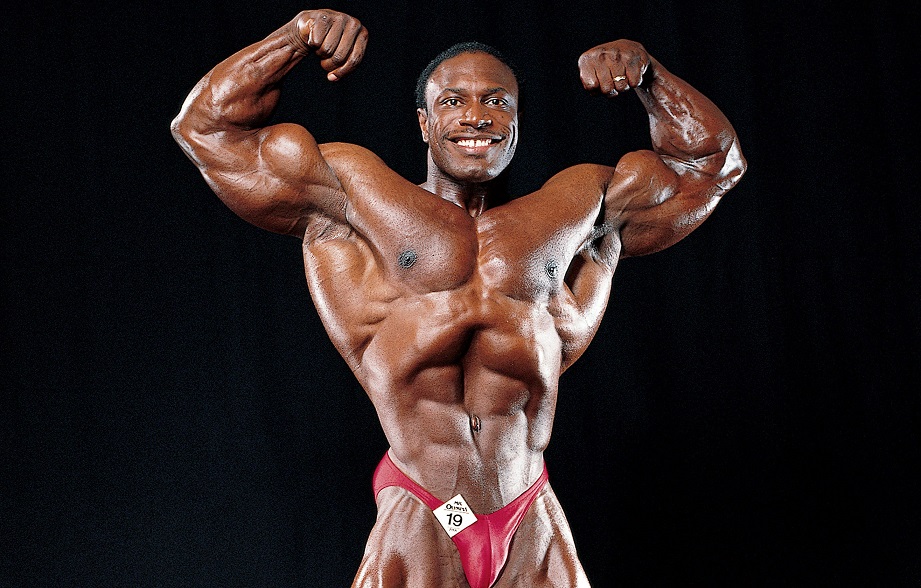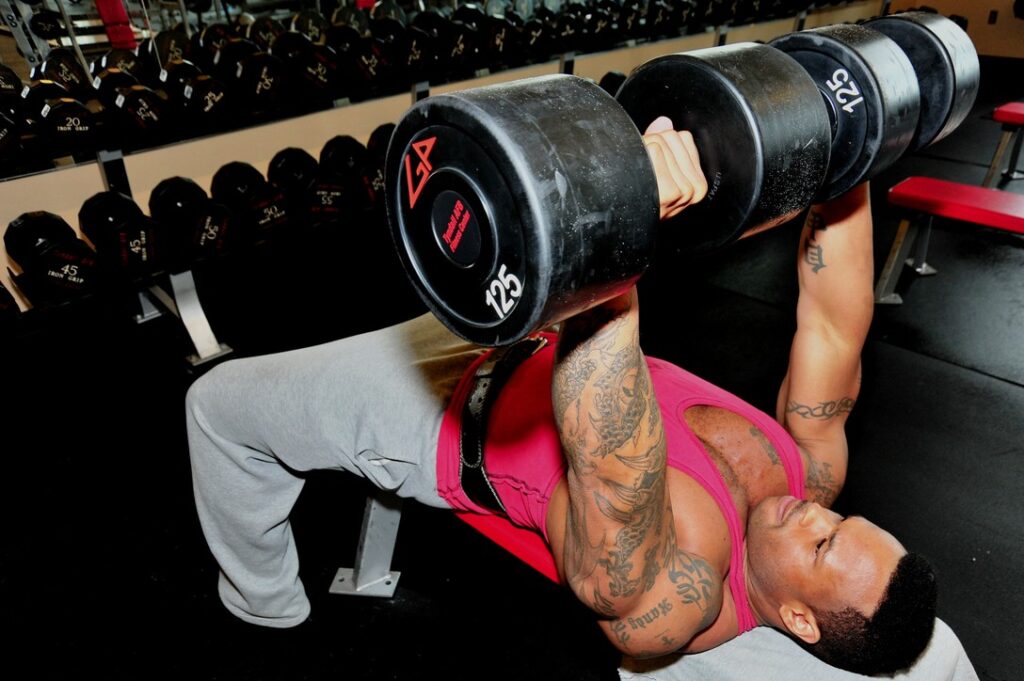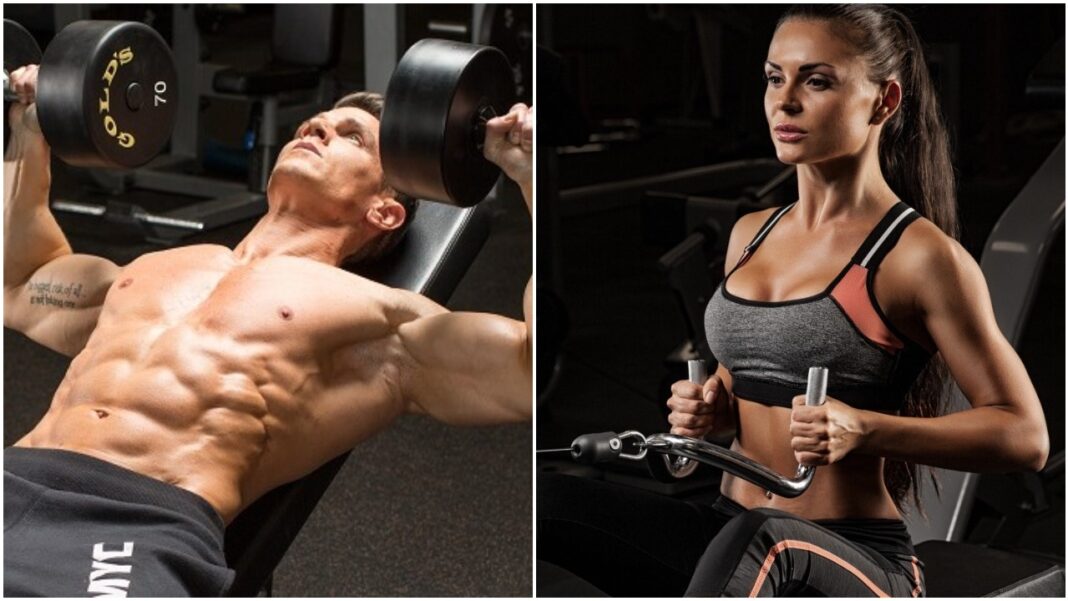What is a push-pull routine? Let’s go back to the ’80s—back to the era of Miami Vice, Mötley Crüe, parachute pants, and Lee Haney and Cory Everson dominating male and female bodybuilding. Just as you don’t hear “totally awesome” much anymore, another term from back then has slipped out of popular usage in gyms. It’s “push-pull,” and it’s a way of dividing your upper body workouts into pushing muscles on one day and pulling muscles on another day. This was especially popular in the ’80s when most bodybuilders trained individual muscles less frequently than they did in the ’70s but not as infrequently as they do today. We’ll explore this evolution and explain why a push-pull split is still a totally awesome way of working muscles more often.

PUSH-PULL WORKOUT SPLIT
It seemed like Arnold Schwarzenegger lived in Gold’s Gym. In the early ’70s when he was Mr. Olympia, he worked out twice daily and trained bodyparts three times per week (not counting calves and abs, which he trained daily). Not everyone had the luxury of hitting the iron twice daily, but almost every bodybuilder was working bodyparts every other day. By the late ’70s, this started to change. Splits that stressed muscles twice per week were the norm. And in the ’80s, this was often stretched to twice every eight days via a popular three-on, one-off split (three training days, followed by one rest day).
In any split in which your workouts are spread over three consecutive days, typically one is leg day. Then the question is, how do you organize your upper body work over the remaining two days to maximize rest for each muscle? If you hit chest and back one day and shoulders and arms the next, you’re going to stress delts, biceps, and triceps on both days. This is because front delts and triceps assist on chest presses and dips, and rear delts and biceps assist on almost every back exercise. Any split that results in this double-stress for shoulders and arms is going to reduce your growth-inducing recuperation for those areas.
The best solution is the push-pull workout split. Exercises in which your elbow joints are straight at contractions (bench presses, shoulder presses, pushdowns, etc.) are pushers. Exercises in which your elbow joints are bent at contractions (rows, pulldowns, barbell curls, etc.) or in which you lift vertically (deadlifts, shrugs, etc.) are pullers. Pushers and pullers are divided into separate workouts. So, in a push-pull routine, you work chest, front and side delts, and triceps in a push workout; and back, rear delts, traps, and biceps in a pull workout. (You may prefer to work rear delts with front and side delts.) This allows you to train bodyparts twice weekly or twice every eight days with sufficient time to recuperate between workouts.

PUSH-PULL WORKOUT SPLIT BASICS
This push-pull split is ideal when your body is divided into three workouts over three days.
Schedule pushing muscles (chest, front and side delts, triceps) for one workout.
Schedule pulling muscles (back, rear delts, traps, biceps) for a different workout.
Each push-pull workout should progress like this: chest or back first, shoulder muscle(s) next, arm muscles last.
Despite the name push-pull, you can do a pull day before a push day.
PUSH-PULL WORKOUT TIPS
Many people like to train legs after an off-day. However, to maximize recuperation for your upper body muscles, schedule your leg day between the push and pull days.
If you train your body over four consecutive days instead of three, you can still do a push-pull split. Do push (without triceps) and pull (without biceps and forearms) on the first two days, legs on day three, and arms on day four. Take at least one off-day, then repeat.
Legs can also be divided into push (quads) and pull (hamstrings) workouts.
Calves and abs can be trained in any workout.
A push-pull split can be done on any schedule. For example, you can train three days per week: Monday (pull), Wednesday (push), Friday (legs).

PUSH-PULL WORKOUT SPLIT: 3-ON, 1-OFF
Day 1 — PUSH: Chest, front and side delts, triceps
Day 2 — LEGS: Quads, hamstrings, calves, abs
Day 3 — PULL: Back, rear delts, traps, biceps, forearms
Day 4 — OFF
PUSH WORKOUT
CHEST
Barbell Bench Press — 4 x 12-8 reps
Dumbbell Incline Press — 4 x 12-8 reps
Cable Crossover — 4 x 10-12 reps
Dip — 3 x 10-12 reps
FRONT AND SIDE DELTS
Barbell Shoulder Press — 4 x 12-8 reps
Dumbbell Front Raise — 3 x 10-12 reps
Side Lateral — 5 x 10-15 reps
TRICEPS
Lying Triceps Extension — 4 x 10-12 reps
Dumbbell Triceps Extension — 3 x 10-12 reps
Pushdown — 4 x 10-12 reps
PULL WORKOUT
BACK
Front Pulldown — 4 x 10-12 reps
Barbell Row — 4 x 12-8 reps
One-arm Dumbbell Row — 4 x 10-12 reps
Low-cable Row — 3 x 10-15 reps
REAR DELTS
Machine Rear Lateral — 4 x 10-15 reps
TRAPEZIUS
Dumbbell Shrug — 4 x 10-12 reps
BICEPS
EZ-bar Curl — 4 x 10-12 reps
Machine Curl — 4 x 10-12 reps
Incline Dumbbell Curl — 3 x 10-12 reps
FOREARMS
Wrist Curl — 4 x 12-15 reps
















































